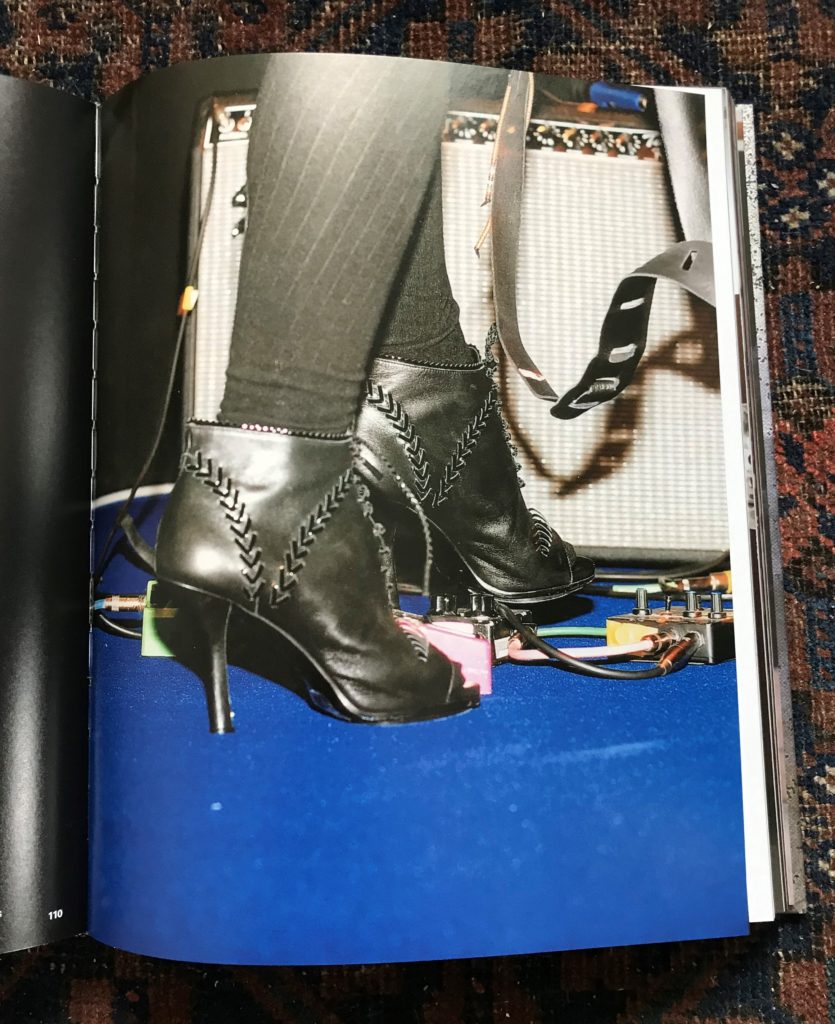Culture Club: Kim Gordon, Icon
Photo: William Kaizen
I was given a copy of Kim Gordon’s new book No Icon for the holidays, a coffee-table book tracing Gordon’s life from her early days as a 60s surfer girl, to co-founding Sonic Youth, through her recent success as a visual artist. I’m a longtime fan of Gordon’s work, not least because she’s an astute critic of rock music as a boy’s club. Throughout No Icon, she appears in a subversive role she helped invent: the alt-pop idol whose muse has kept her performing into her sixties. There are few precedents for women in rock ‘n’ roll, even indie-rock, who have kept making relevant work so late into middle age. Photographs of her appear on nearly every page, and she looks amazing in all of them. No icon, Kim? Really?
No Icon is the illustrated pendant to Girl in a Band, Gordon’s 2015 autobiography whose writing was prompted by her divorce from Thurston Moore, with whom she co-founded Sonic Youth. From the outside, their relationship looked like the epitome of a successful artistic partnership. I dreamed of having a similar partnership based on creativity and a love of the arts, and was lucky enough to find one. When they split, it felt weirdly personal.
No Icon jumps from an ironically chosen school yearbook photo of Gordon on its cover to an opening photo of her in her art studio in Florence prepping work for a major museum exhibition. (Gordon and Moore raised their daughter in Northampton.) Disregarding chronology, the rest of the book includes images from professional photo shoots, intimate snapshots, reproductions of her visual art, performance documentation, and images of her manuscripts and lyrics.
Gordon spent her earliest professional years immersed in the art world. There are photographs with her old pal Mike Kelley, who became one of the most prominent post-conceptual artists of the 1980s and 90s, as well with mentors like Dan Graham. There are surprisingly few images of her performing with Sonic Youth. Unsurprisingly, only one prominently features Moore. She appears more frequently with a host of other artists and musicians with whom she has collaborated, mostly notably Yoko Ono whose long career mixing avant-garde rock and the visual arts is analogous to Gordon’s own.
There are cover images from Gordon’s musical recordings, including the excellent No Home Record from 2019, her first solo album after forty years as a musician. Documentary shots capture hybrid performances like the dance duet with guitar improvisation that she recently performed at the Louvre. She appears wearing X-Girl, a streetwear brand she co-founded in the early 90s. Recent photos show her modeling high fashion for Rodarte. Gordon is a big supporter of progressive democrats–in one image she’s seen sporting a Bernie t-shirt.

One of my favorite photos is a fetishistic closeup of her feet on stage in black, high-heeled booties. She’s standing on an electric blue carpet and stepping on an effects pedal, her amp a blur behind her. An unusual choice for a performance document, its play of textures and strong color contrast combined with its depiction of a woman’s foot performing in a way that is typically coded as masculine fully encapsulates Gordon’s artistic sensibility.
So, c’mon Kim! Enjoy your valedictory lap and admit you’re an icon. The book is a well-deserved tribute to an artist who has spent a lifetime successfully bridging feminism, rock music, fashion, visual art, and politics. I, and your legions of fans, look to you as a role model for how to age gracefully while remaining creative. You’re our icon, and we wouldn’t have it any other way.
William Kaizen is an art historian and public art advocate. He is the chair of the Amherst Public Art Commission
